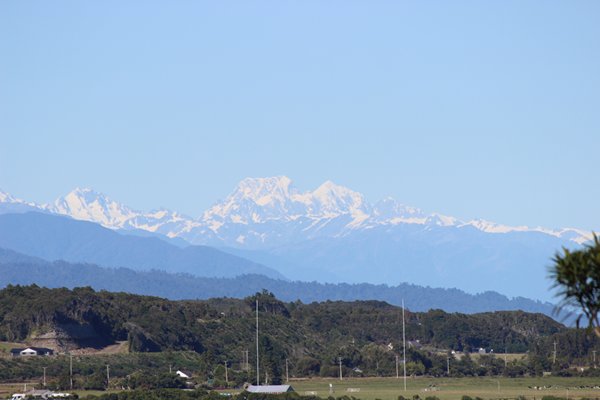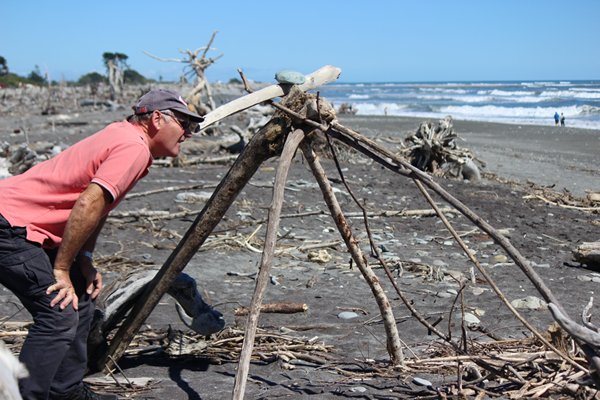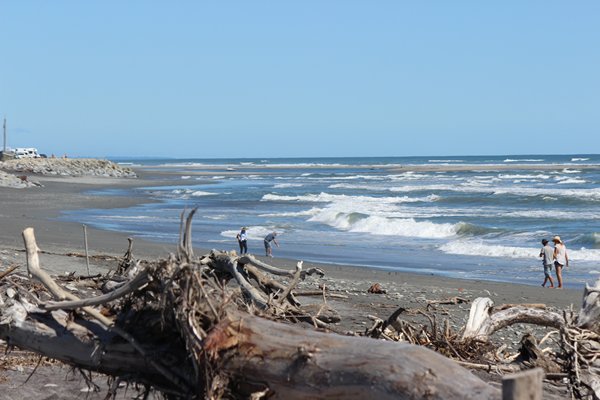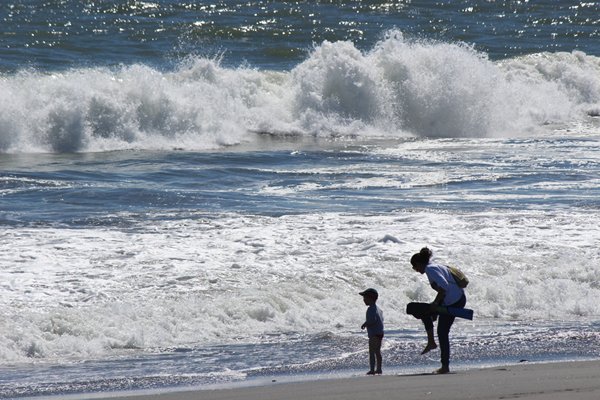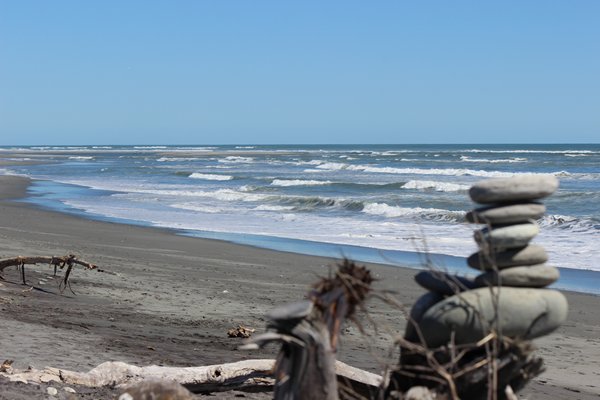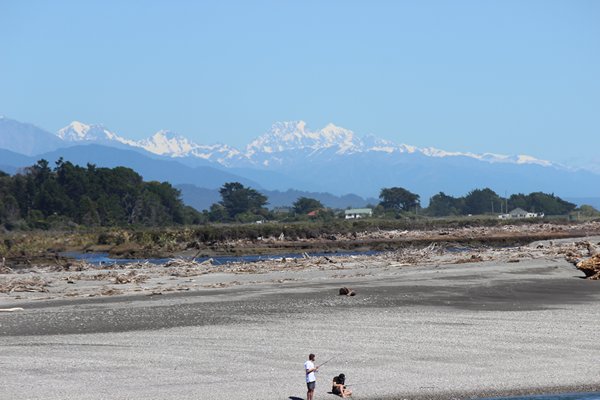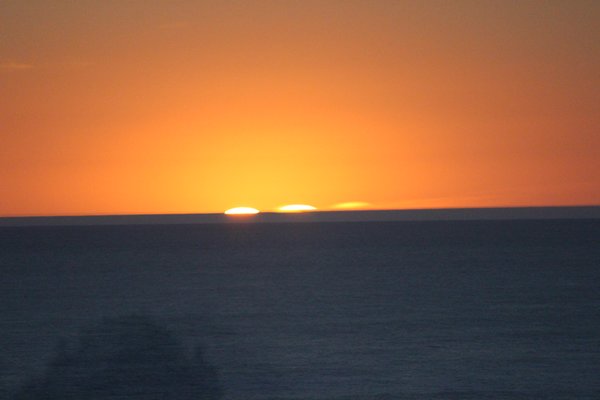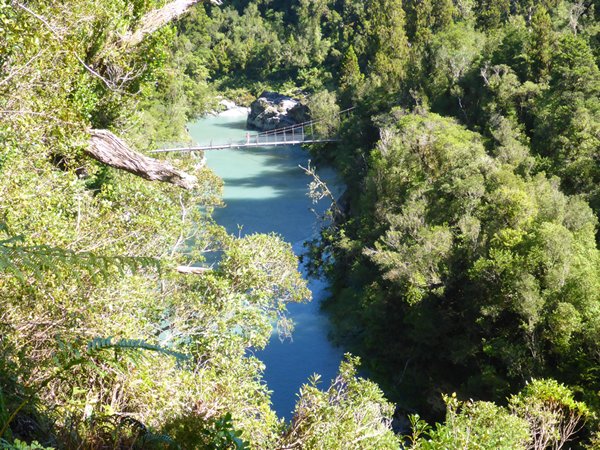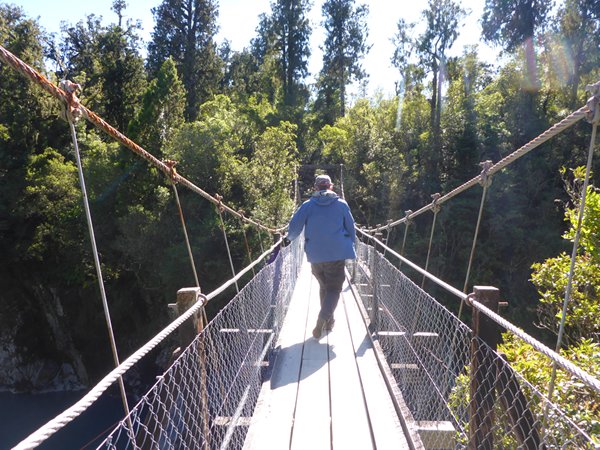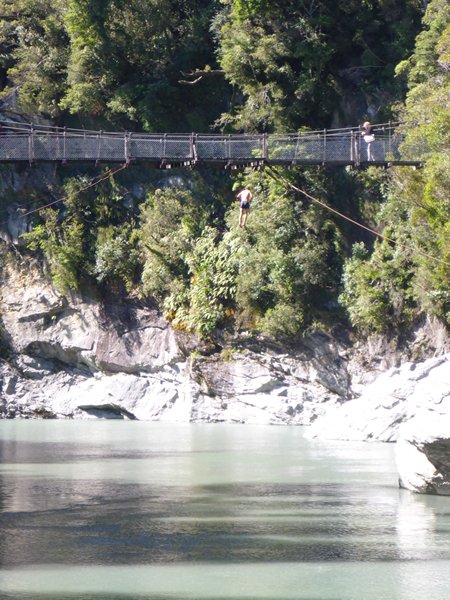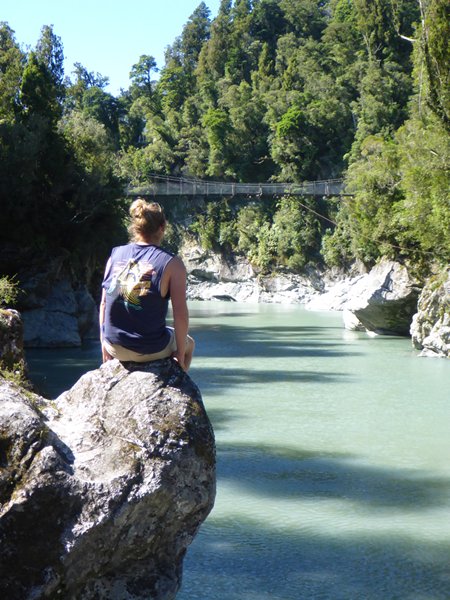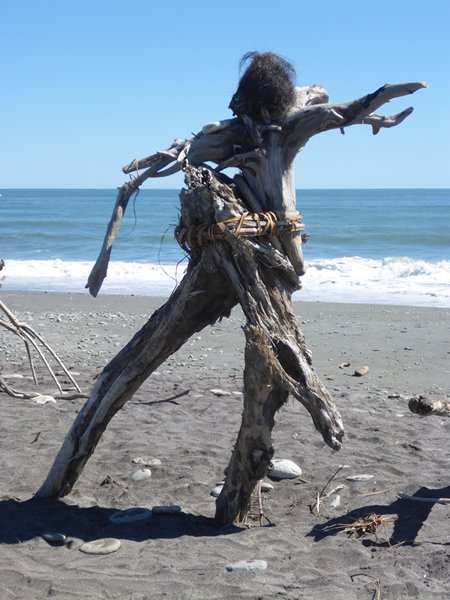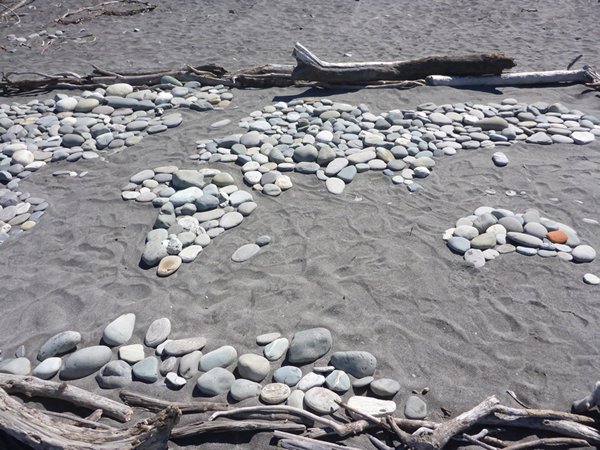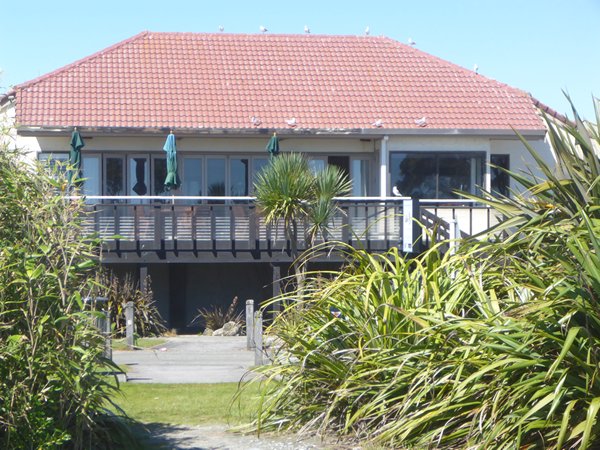Happy times in Hokitika

|
Happy Times in Hokitika
Hokitika grew up with its back to the sea, as Paul explained to us, the all- powerful Tasman waves claimed so many lives in their sucking under tow that the younger generation, himself included were brought up under threat of real punishment if they went anywhere near that shore. It’s the sheer scale of the massive breakers that would put me off, but to some that is their attractiveness which draws in the unwary. We watched as a young mother walked her toddler along the water’s edge not watching as the tumbling waters approached like a pack of marauding hounds. Jane and Paul owned a red roofed hotel along this seafront years ago and were the first to build an upstairs restaurant that dared to face the marine monster on their doorstep. They had sold up and launched their own steel yacht, Nora J, after Jane, when we met them in Panama and they became line handlers for us before returning through the canal to collect Nora J. The innovative design of their home meant Rob and I stayed in the self-contained apartment beneath their self-contained one on top. We got together in the two evenings we were there to share a meal and chat. They have now completed their 20 year circumnavigation and are going through the difficult transition back to living in a beautiful but non-moving house. When I asked Jane if they had a party or celebrated the completion of their maritime marathon in any way she quietly replied, “Wish I was ten years younger”. The sky was a clear blue backdrop to snow-capped Mt Cook and the Southern Alps as we drove over fertile farmland known as ‘flats’, towards Hokitika Gorge. A billy goat was tethered on one side of the road on a line just long enough for us to have to move right a little to avoid his bum. He gazed longingly across the road at the high fenced pen full with elegant females posing and teasing him. Blue green mountain water ran through the gorge, turning a right angle bend infront of the rocks we were sitting on. To our left was the pedestrian suspension bridge we had crossed to get to our spot. A young lad stripped to his speedos and marched purposefully onto the bridge. Without any ado he climbed onto the rickety handrail, yelled and let go, his cross shaped body taking a good second over the long drop and making an alarming slap as it disappeared. We all watched with baited breath, then he surfaced and whooped an exclamation as he returned to the shore. Taongas (treasures) of Hokitika. Down in interesting Hokitika we window shopped in two Westland Greenstone (Pounamu or Jade) outlets where we watched the skilled craftsmen and women sawing and turning the stone into glistening amulets and ornaments. I bought a pendant in the shape of a Maori fish hook, Hei Matau which wishes the wearer health and prosperity. It also represents strength and determination (!), but most importantly it promises a SAFE PASSAGE OVER WATER. Best keep it on then. Many of the same men were involved in the gold rushes of California, Victoria Australia and New Zealand, travelling from place to place on the square riggers that once filled Westland’s Harbours. Hokitika’s gold rush was comparable to the California Rush of 1849 and the Klondike in 1900. The gold here is 94% to 98% pure and the largest nugget ever found in NZ, weighing 3.09kg or 99.35oz was recovered just south of Hokitika. The kind lady at the counter in the Gold Room outlet shop let us hold in the palm of our hands a warm, glowing nugget found locally which was about the same size as our gold specked quartz rock. Well we can wish can’t we? Just over the road another craft shop brought us back to earth, the Sock Factory. With a big collection of ageing sock knitting machines of all shapes and sizes on high shelves all around the shop and through a glazed screen we could have watched modern production but the lady owner was short staffed and had to man the till instead. “With so much possum used in clothing in NZ do you farm possums here?” I asked naively. “No, there’s 18 million of the buggers out there, we just shoot ‘em between the eyes and strip ‘em while they’re still warm.” All that closeness to things of high value had made us thirsty so we sat facing outwards in the Gold Room Café overlooking the main roundabout in Hokitika upon which stands the characteristic clock tower. We weren’t watching the time though; road workers were re-surfacing the road around the round-about and that provided excellent entertainment as we supped our flat whites. Pungent and glistening hot tar was poured from a nozzle controlled by a workman poised on the back of the lorry. The shape of the roundabout was presenting a little problem for the young driver who got the angle slightly wrong and backed over the rapidly cooling tar he had just laid. Net result, his back tyres became clothed in a sheet of blubbery black tar so when he drove forward it looked like a flap of skin slapping on the rubber. Before we returned to Paul and Jane’s home we booked our return crossing of the Cook Strait from Picton to Wellington for five days ahead and how fortuitous an arrangement did that prove to be. We couldn’t leave the next morning without at least guessing at a reunion with Jane and Paul, too harsh a cut off that would have been. So we ‘planned’ to meet again either here in Hoky or at Havelock on the Cook Strait coast where Nora J is now moored. Internal flights in NZ are so cheap we could easily fly from Auckland to either of the ‘H’s. Yet again we were transitting the South Island from Greymouth. The first time was via Arthurs Pass to Christchurch and now we were heading for Blenheim, which would have been almost due south from Picton down the east coast had that Highway not been wrecked by the last earthquake in November 2016. We had to wait at the start of one sturdy bridge across a river. As we waited for oncoming cars we noticed a railway line across the same surface on this bridge. How amazing that would have been, to have to wait for a train to clear the bridge first. We were now in autumn and the fields were noticeably greener than when we came, as we moved north. Piles of black coal dust, rusting rolling stock and a big cemetery at Reefton combined to tell the story of past industry, road and railway building and its human cost. We had a brief break at Lyell. Jane had mentioned it as an interesting old gold mining ghost town and we would have loved to have walked the 45 minute walk to the old town but the moment we emerged from Vicky the sand flies descended on any uncovered skin, so I took a few photos of the history boards for future reference and we moved on. Around us there was evidence of mountain sides recovering from pine growth and de-forestation. The soil can nourish only two crops of pine trees before it is depleted of nutrients. We were back on Highway 6 and many of the two way bridges we had seen under construction on our way down were finished, on this alternative route to the closed east coast highway. Some lorry drivers in their haste to minimise journey times on this longer route are using excessive speed which has so far cost five lives in accidents. Now on Highway 63 to our left we had the Richmond Range of mountains extending along the far shore of the Wairau River and ahead were the vineyards of Marlborough. Green corduroy fields of vines reached to the far mountains. Kintyre Vineyards, Sauvignon Blanc, Olives and Clouds! Tomorrow we would drink wine. |
